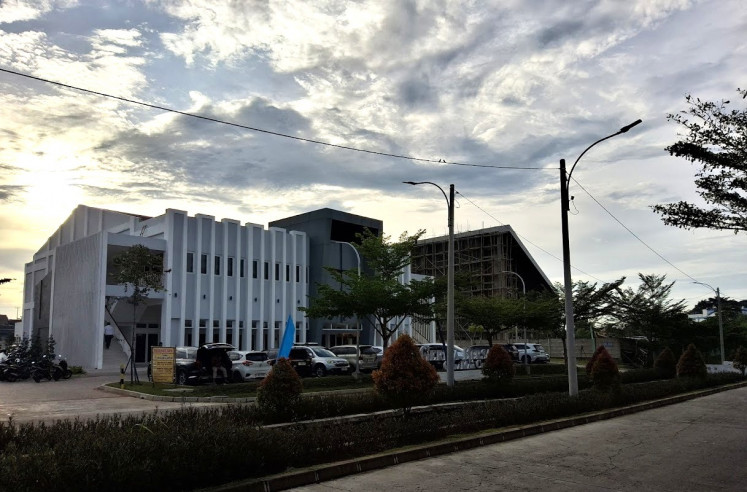Popular Reads
Top Results
Can't find what you're looking for?
View all search resultsPopular Reads
Top Results
Can't find what you're looking for?
View all search resultsAddressing challenges in Indonesia’s pension funds
IFG Progress estimated that assuming income was the single factor deciding pension fund ownership, Indonesia needed around 10 years to achieve Asia's average pension fund penetration rates.
Change text size
Gift Premium Articles
to Anyone
T
he financial sector is an important catalyst to spur economic development through capital accumulation and technological progress. It does this by increasing the savings rate and mobilizing and pooling savings, as well as optimizing the allocation of capital.
In a developing country like Indonesia, while the pace of development should go hand-in-hand with financial sector development, it is apparent that the non-bank financial institutions (NBFI) have been growing at a slower growth rate than banks, particularly due to the low uptake and low literacy levels in society. A survey conducted by the Financial Services Authority (OJK) in 2019 showed that nationwide literacy on NBFI was lower than on banks. Literacy on pension funds was particularly low at 14 percent, compared with banks at 36 percent and insurance at 18 percent.
Recent issues involving pension funds in Indonesia have been widely discussed. In particular, discussions have been related to the scheme that covers civil servants and the armed forces, where Finance Minister Sri Mulyani Indrawati argued that the current scheme would add substantial pressure to the government budget without proper reforms.
Indonesia is currently reaping the advantages of a demographic dividend, where the share of the productive population exceeds the non-productive population, namely the youth and elderly. However, due to a slowdown in the birth rate, it is estimated that in the next 15 years, we will experience the aging population phenomenon. This is similar to what is currently happening in South Korea and Japan.
There are several challenges that need to be addressed in the pension funds industry in Indonesia. These challenges can be divided into the demand-side, mainly related to the size of coverage and contribution, and the supply-side challenges, concerning the institutional setting and the governance of the industry.
From the demand-side analysis, the pension fund penetration rate in Indonesia is still sub-optimal relative to other comparable countries. The mandatory pension-funds-asset to GDP ratio was only around 4.8 percent of GDP in 2021. This ratio is much lower than other ASEAN countries such as Malaysia (61.4 percent) and Thailand (12.7 percent).
Among the reasons, to be enrolled in a pension security program in Indonesia, a person must be identified as a formal worker. However, the number of formal workers is still minuscule, at less than 45 percent of the total labor force. Thus, the number of workers that have pension fund membership forms is around 16 percent of the total labor force. Moreover, Indonesia’s mandatory contribution rate for both the Old-Age Security and the Pension Security amounts to 8.7 percent of workers’ income, which is less than almost every country in ASEAN except Thailand’s mandatory pension fund.



















